Use this classic pastry cream (also known as crème patisserie) in your trifles, tarts & pastries. Quick & easy to make!
This is a rich, thick, smooth & creamy custard. Yet it doesn't contain cream, only whole milk. It's more dollop-able than pourable. It's layered in trifles, piped into pastries and used to line tarts.
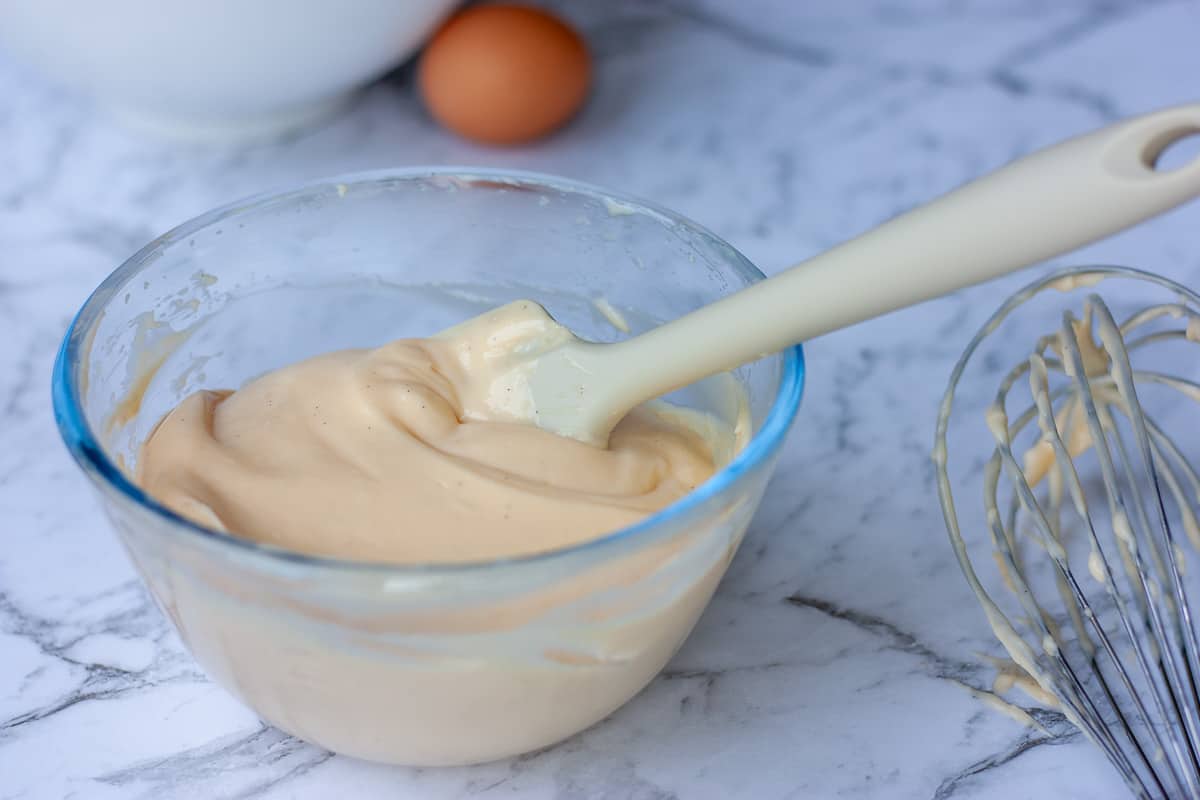
We combine egg yolks, sugar, corn flour/starch, milk and vanilla in a saucepan. Heated, stirring all the time, until thickened. Whisk through cubes of cold butter to cool down the mix and enrich it. Cover the pastry cream and place in the fridge to chill.
Pastry cream contains flour. This means it's not as finickity to cook as thinner flourless custards. The flour helps stop the egg curdling. This means we don't have to worry so much about keeping the heat low and gentle. We can cook the pastry cream straight in a saucepan. No bain-marie required (when you heat in a bowl set over a bowl of simmering water).
🥘 Ingredients
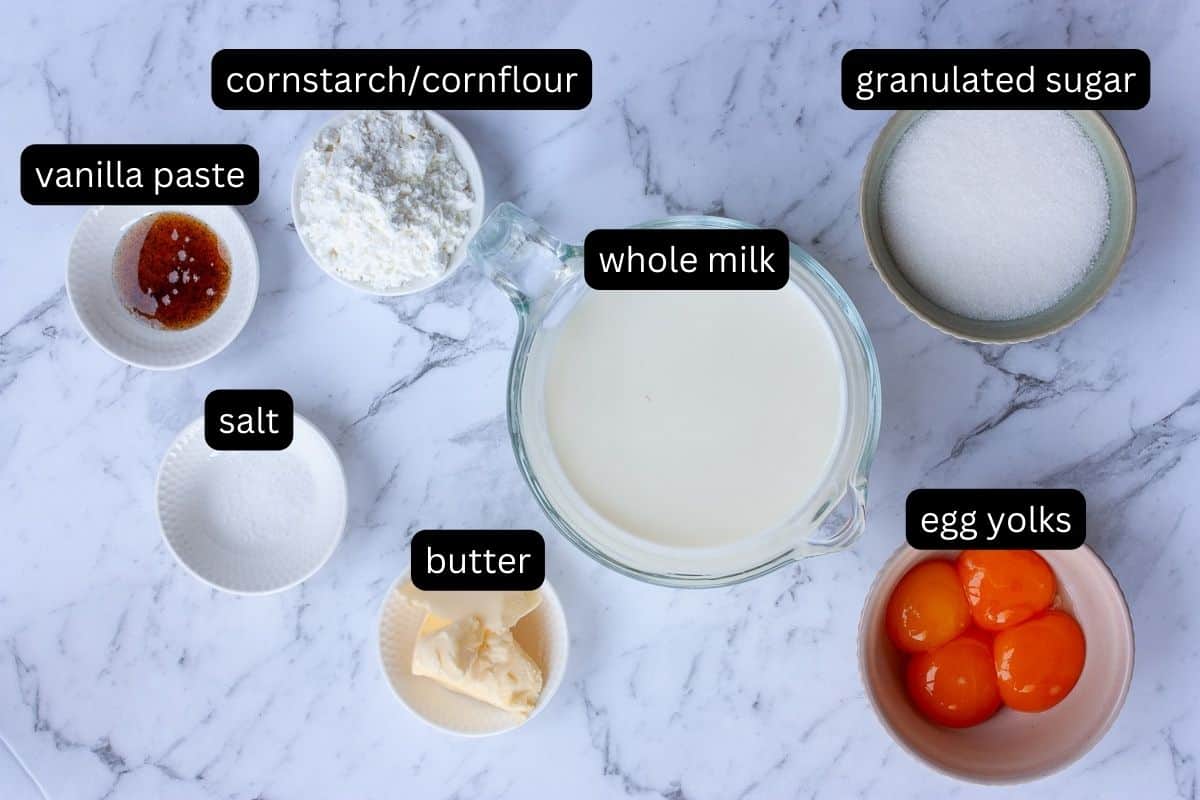
Corn starch/cornflour- thickens without imparting a floury flavour. It has the advantage over wheat flour of being lighter in texture and flavour. It's also gluten-free. Corn flour allows egg yolk to thicken beyond the usual temperature. Custards without flour need gentle heat. This pastry cream is easier to make because it contains a starch.
Butter - added at the end for shine, flavour and texture. It helps cool down the custard once cooked.
Milk - whole milk recommended. It delivers full body and rich flavour. Using cream in custards can give a greasy mouthfeel and ever so slightly grainy texture. This pastry 'cream' is plenty creamy enough without using cream. If you want to make this low FODMAP, use lactose-free milk.
Eggs - contribute flavour and provide structure. Pastry cream typically calls for egg yolks, not whole eggs. The high fat content of yolks supplies fuller flavour, richer colour and a more tender, creamy structure. They help to thicken the custard too.
Sugar - apart from adding sweetness, sugar helps slow down the rate at which eggs coagulate. This allows you to cook the pastry cream enough with a lower risk of scrambling the eggs.
Vanilla Paste - has advantage over vanilla extract of containing seeds. These look nice in the finished pastry cream.
🔪 Instructions
Start combining ingredients straight in a saucepan off the heat. We start with egg yolks, sugar, corn flour and salt.
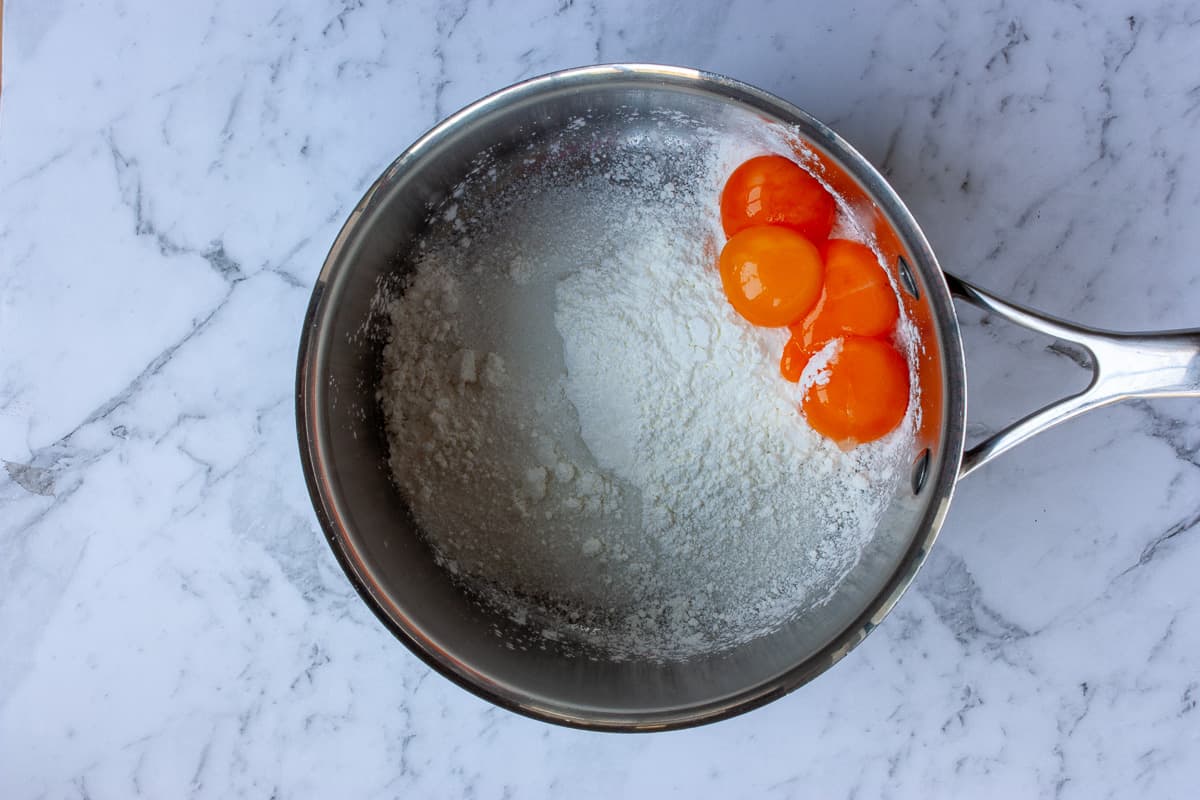
We smear these ingredients together until well combined and lightened in colour.
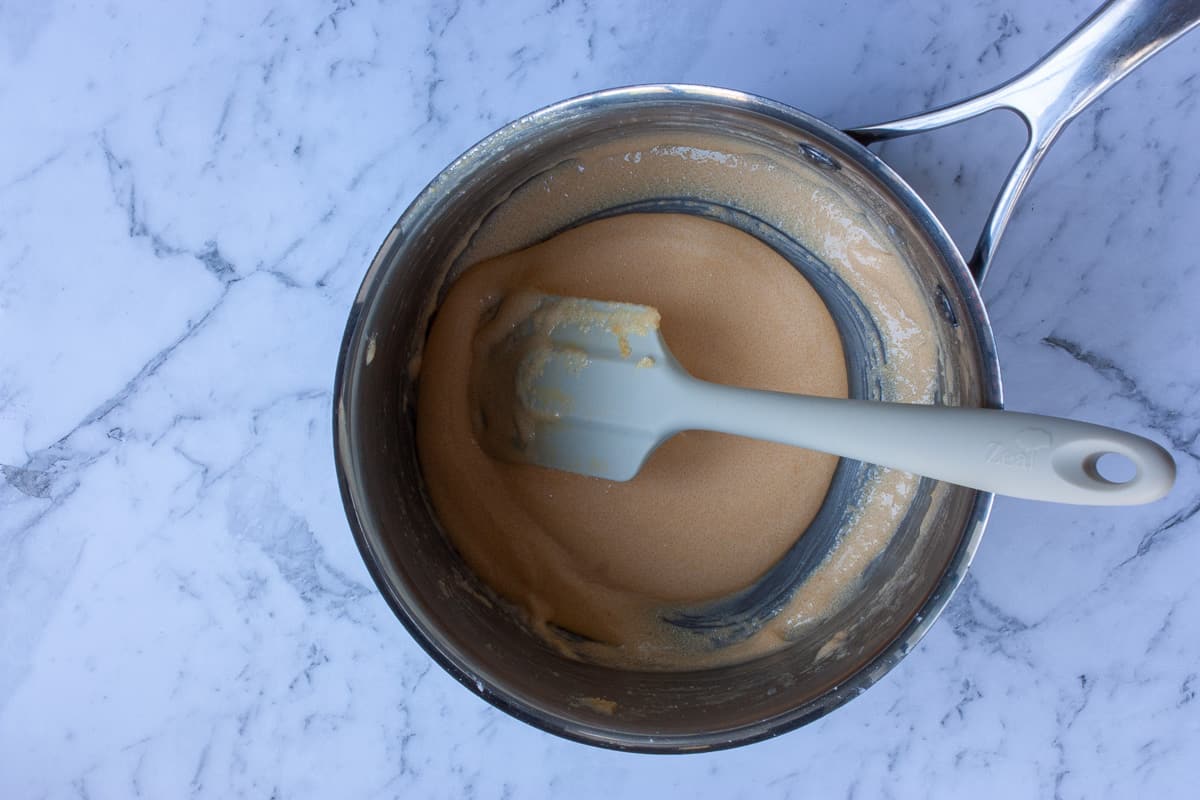
We add the milk and vanilla.
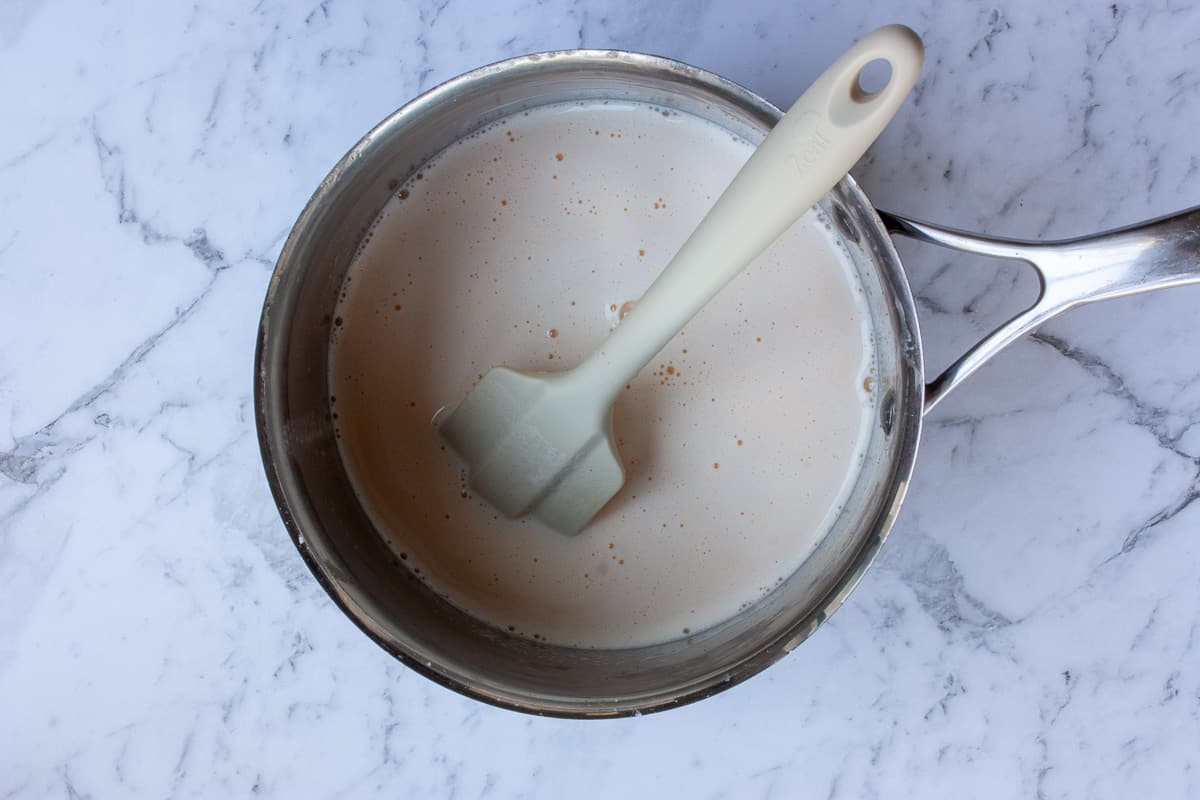
We cook over medium heat on the stove top, whisking all the time. The custard will steam and come to a bubble.
We need to reach a certain temperature and hold it there for a bit….
We need to heat the custard base and bring the pastry cream to a simmer. We need to maintain it at a gentle bubble for around 40 seconds.
When mixed with water (in the milk) and heated to around 80°C, starch granules gelatinise. This means that they absorb water, then leak out their starchy molecules. This thickens the custard base.
Meanwhile, the proteins in the yolks are being altered by heat to form a strong, flexible network.
We can't only bring the pastry cream to 80°C and be done. The yolks contain an enzyme called amylase. This can slowly break down the thickening power of the corn starch and ruin our efforts. Our once-thick pastry cream can revert to a runny sauce. We need to hold the pastry cream at a bubble while whisking all the time for about a minute. This destroys the amylase so that it's no longer a threat to the structure of the pastry cream.
Don't worry too much overheating and scrambling the eggs. The other ingredients dilute the egg proteins. They'll be further apart and less likely to rapidly and tightly bond.
Stay focused!
You need to pay constant attention and whisk continuously - don't multitask! Luckily you don't have to be patient for too long. Pastry Cream takes about 12 minutes to make.
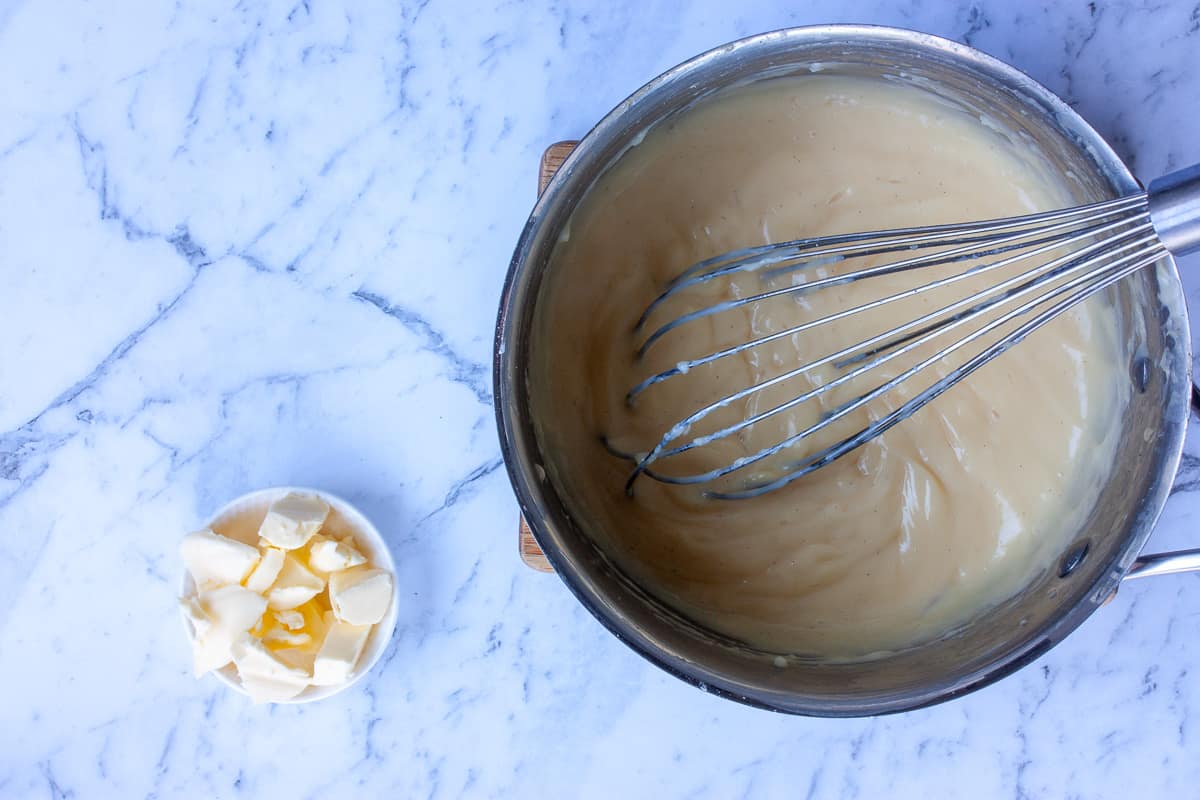
Once thickened and cooked for long enough, we pass the pastry cream through a fine-mesh strainer into a cooled bowl.
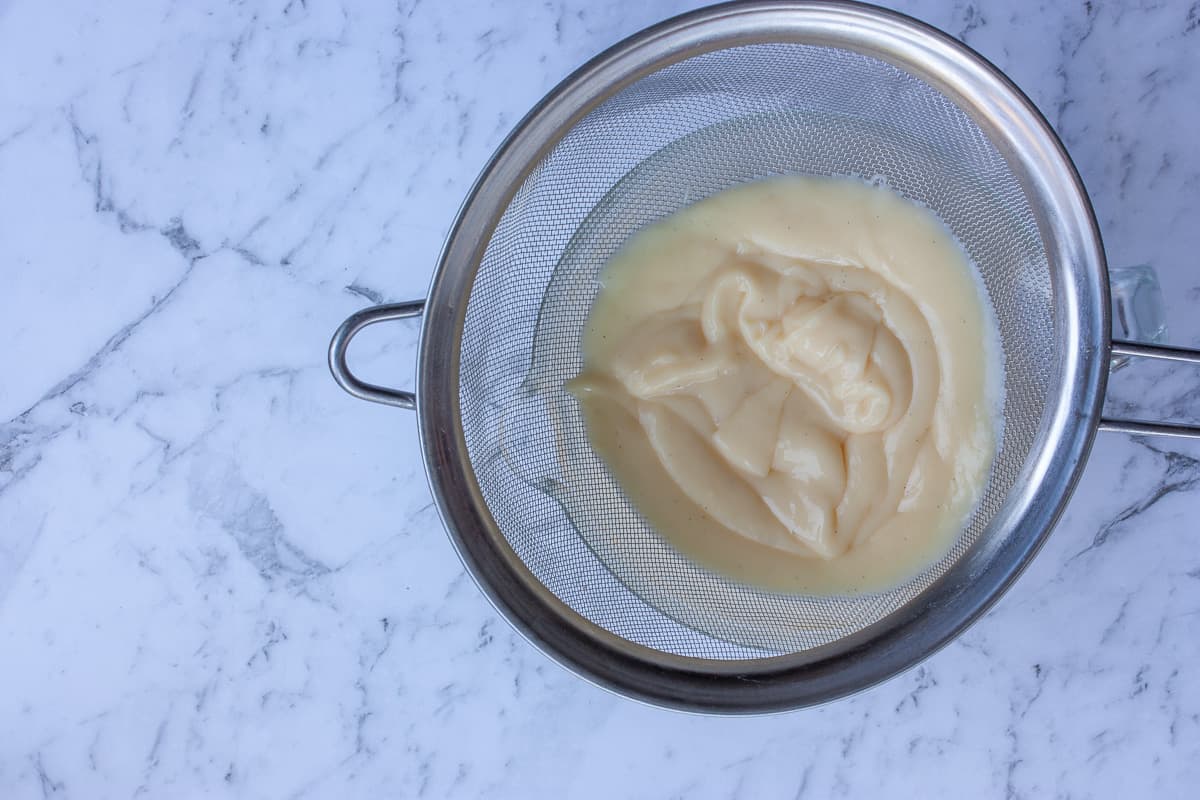
We whisk through cubes of cold butter until melted. This helps cool down the custard to stop the cooking and adds a glossy finish. We cover the pastry cream closely with plastic wrap and transfer to the fridge to cool.
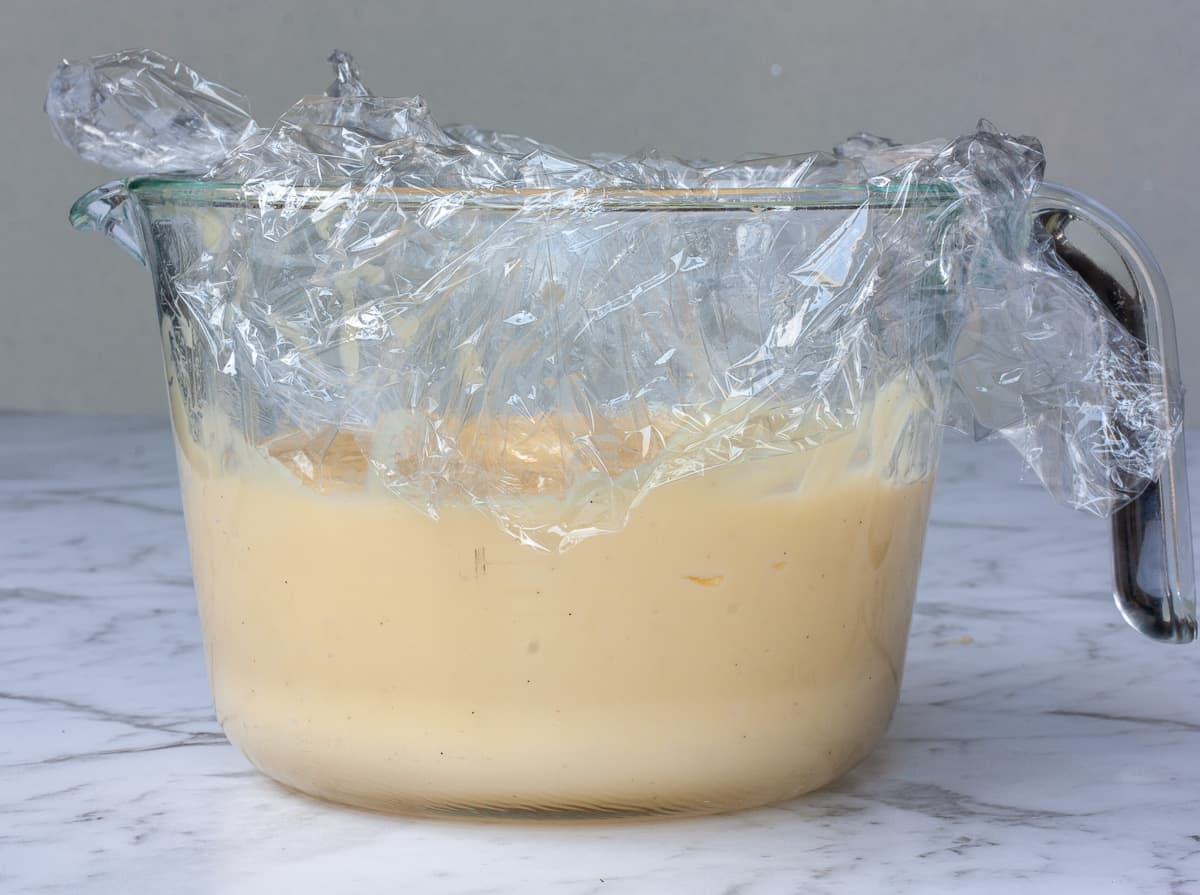
❓FAQs
When we whisk egg yolks into sugar to achieve a lighter colour and texture. A silicone spatula is handy for this. It's great for flexing and smearing the yolks into the granular sugar and getting into the edges of the pan. Don't stress too much if the sugar granules don't fully dissolve at this stage.
No. There's no need to heat the milk before adding it to the eggs. That means there's no need to 'temper' the eggs yolks. Tempering is the gradual mixing of a small amount of hot liquid with eggs. This raises their temperature without causing curdling or scrambling.
No. Some recipes will instruct that you cool the pastry cream ASAP to prevent the eggs curdling. This isn't necessary. Most of the pain points that could arise from making pastry cream is not cooking it for long enough or getting it hot enough.
Do you have a pastry cream emergency and need it stat? You CAN whisk the custard in a metal bowl set inside another containing ice and water. This will speed up the cooling process.
You need to stir the pastry cream constantly while cooking. The custard at the base and sides of the pan cooks more quickly. You need to keep the mix on the move to prevent scorching the mixture or curdling the egg yolks. Straining the mix before chilling helps filter out any lumpy bits too. Cover the pastry cream with plastic wrap resting on the surface to prevent a skin forming.
If you've taken it a little far and it starts to curdle/split, it is easily rescued with some vigorous whisking. You can even use an immersion (stick) blender.
It's split, but you didn't realise just after cooking 😊. Again, whisk, whisk, whisk. I've suggested cooling a sieve (fine-mesh strainer) and bowl in the fridge at the start. Ideally the bowl will be metallic. Metal conducts heat well and will enable heat to escape from the pastry cream more rapidly). Once we've cooked the custard, we pass it through the cold sieve and into a cold bowl. Quicker cooling means less chance of splitting.
Don't throw it away! Reheat and cool again. This just means you didn't reach and maintain a high enough temperature to thicken the pastry cream.
Yes. It will keep well in the fridge for a few days. You may need to give it a gentle whisk before using to ensure a smooth texture.
📖 Recipe
Ingredients
- 115 g granulated sugar (note)
- 30 g corn starch/cornflour
- ¼ teaspoon salt
- yolks from four large eggs
- 455 g whole milk
- Teaspoon vanilla paste
- 30 g unsalted butter
Instructions
- Sieve Ready - set a sieve over a heatproof medium metal bowl. This will hold the finished custard. Put these in the fridge to chill.
- Butter - cube the butter and put back in the fridge.30 g unsalted butter
- Combine Ingredients - In a saucepan stir together the sugar, corn starch and salt. Whisk in the egg yolks until the mixture is pale yellow, smooth and fluffy, about 1 minute. Don't worry if all the sugar granules haven't dissolved. Add the vanilla to the milk. Add this to the egg yolk mix in three lots, stirring well until it is all incorporated.115 g granulated sugar30 g corn starch/cornflour¼ teaspoon saltyolks from four large eggs455 g whole milkTeaspoon vanilla paste
- Cook, Whisk & Bubble - place pan over medium heat. Whisk constantly until the pastry cream begins to thicken, about 10 minutes. Once it thickens and starts to bubble, continue to whisk for about 1 minute. Remove from the heat.
- Strain - pour the pastry cream through a fine-mesh sieve set over a heatproof medium bowl.
- Butter - add the cold cubes of butter. Whisk through until melted and well incorporated.
- Cover - immediately place plastic wrap on the surface of the pastry cream to prevent a skin forming. Refrigerate until cold and very thick, about 4 hours.

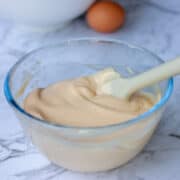
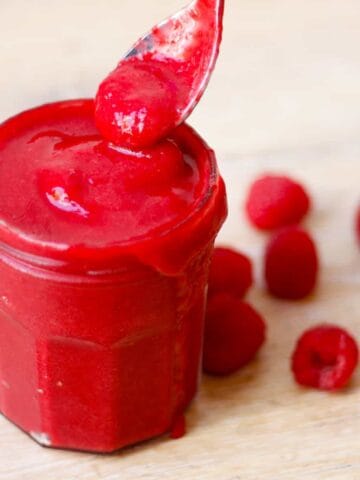
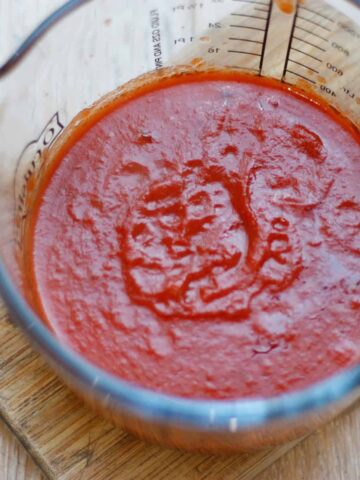



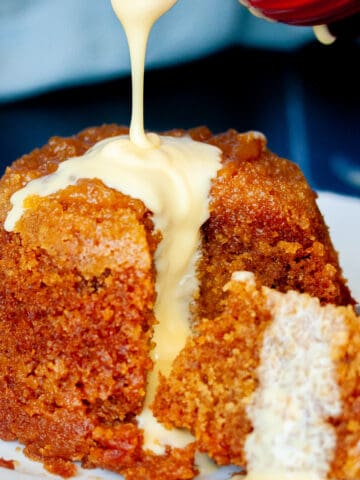
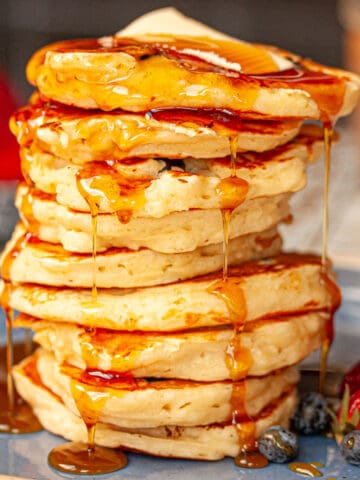
Comments